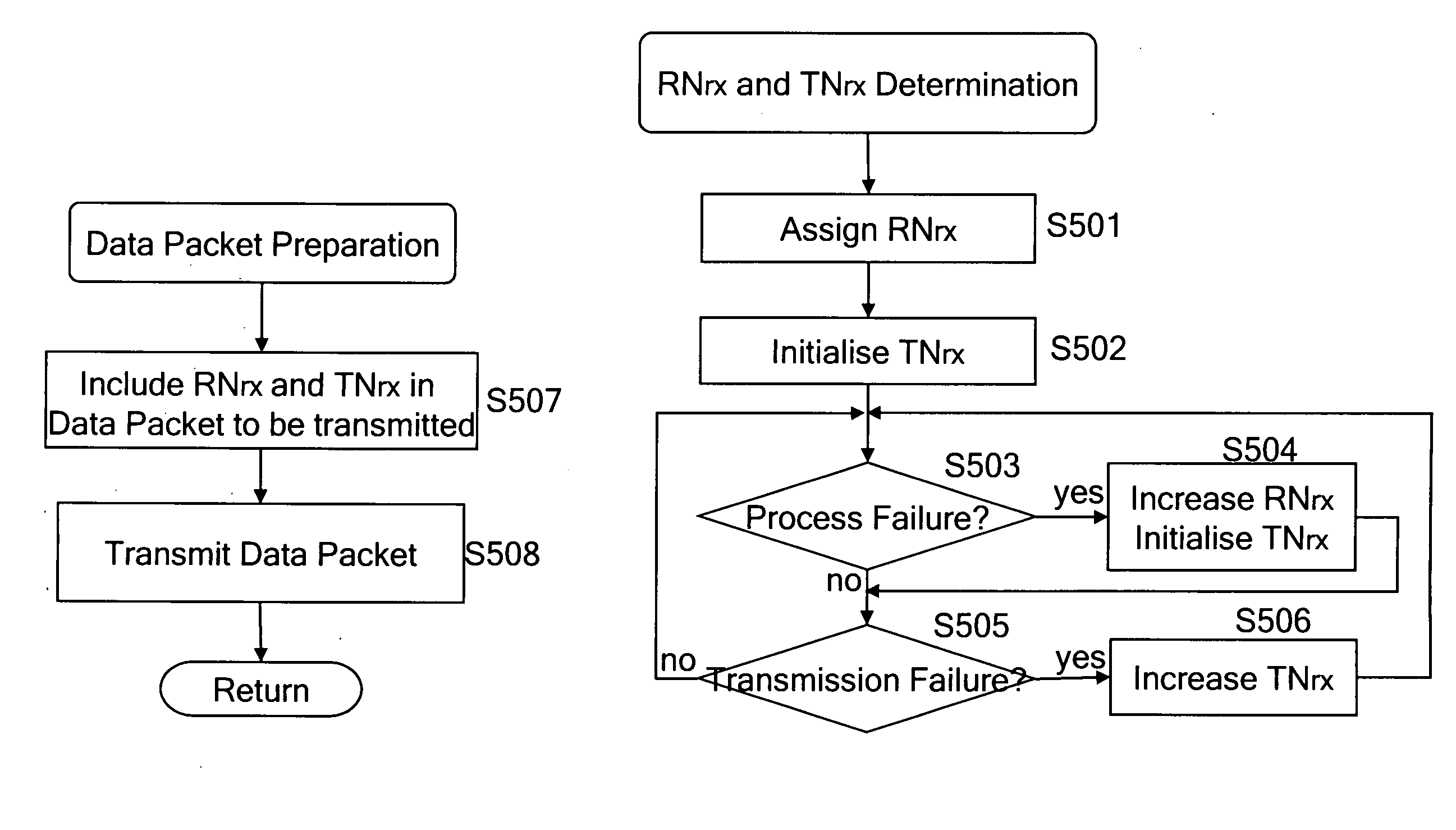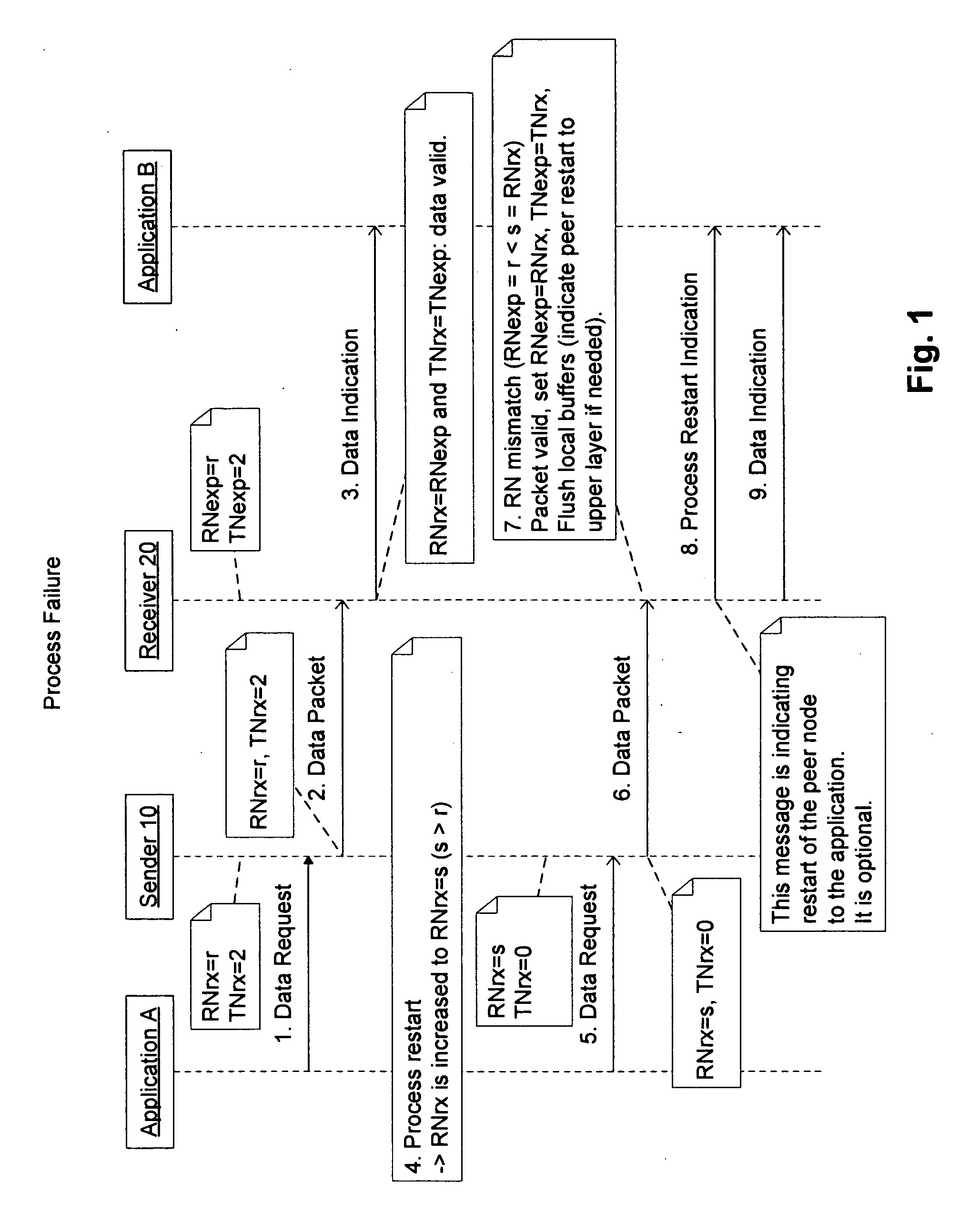Failure differentiation and recovery in distributed systems
a distributed system and failure technology, applied in the field of distributed software systems, can solve the problems of high reliability, huge workload, and system increase the probability of failures drastically, and achieve the effects of low delay, high efficiency, and reliable connection-less protocols
- Summary
- Abstract
- Description
- Claims
- Application Information
AI Technical Summary
Benefits of technology
Problems solved by technology
Method used
Image
Examples
Embodiment Construction
[0050]The terms “transmission restart” or “restart transmission” used throughout the description of the invention means that the sender of the data detects a network failure (e.g. due to a timeout while waiting for an acknowledgement, even after repeated transmit attempts), and restarts the transmission after recognizing that the network has recovered from the network failure and is up again. The primary re-transmission attempts, happening in case of missing acknowledgement(s), should not be understood as “transmission restart”.
[0051]According to a preferred embodiment of the invention, a protocol is proposed which defines two numbers as used indications, a Reincarnation Number (RN) and a Transmission Number (TN). According to the preferred embodiment, both numbers are included in the header of each packet to be transferred. RN is assigned to each process within a distributed software system at start-up time of the process and has to be increasing strictly monotonic. For the initial...
PUM
 Login to View More
Login to View More Abstract
Description
Claims
Application Information
 Login to View More
Login to View More - R&D
- Intellectual Property
- Life Sciences
- Materials
- Tech Scout
- Unparalleled Data Quality
- Higher Quality Content
- 60% Fewer Hallucinations
Browse by: Latest US Patents, China's latest patents, Technical Efficacy Thesaurus, Application Domain, Technology Topic, Popular Technical Reports.
© 2025 PatSnap. All rights reserved.Legal|Privacy policy|Modern Slavery Act Transparency Statement|Sitemap|About US| Contact US: help@patsnap.com



